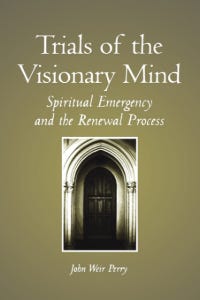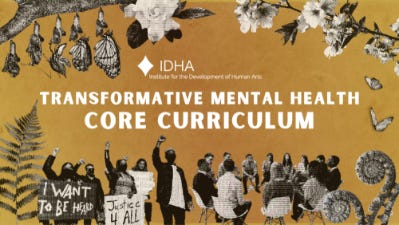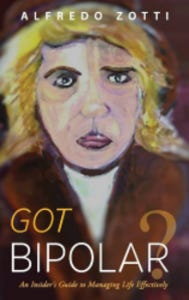The Realms of Imagination: Madness and Childhood
When I step into my workspace each day, it’s much more than a job. It's more like I’m entering a magical realm of imagination. My guides? A lively group of children, ages 3 to 6, and just as importantly, my own inner child who all along has had a strong say in choosing this path. Together, we journey to delightful places filled with over sized problems to solve, epic battles to fight, and the solidarity of friendship to carry us through the chaos.
A child’s imagination is much more than play—it’s a powerful cognitive tool. It helps them generate new ideas, visualize new possibilities, and make sense of the world. Imagination nurtures creativity, problem solving, emotional intelligence, and, perhaps most importantly, a sense of belonging and shared purpose. It teaches us how to live in community and how to offer our gifts while staying sensitive to the gifts and needs of others.
This imaginative power isn’t just something I witness in children, it’s something I rely on for my own mental well-being. I use it to create a reality that fits me better than the rigid and fear-based narratives of the biomedical model. Rather than seeing my sensitivities as symptoms to be treated, I see them as signposts guiding me on a mythopoetic journey filled with daily battles, personal transformation, wonder, and care.
While the traditional mental health model might label this as delusional or dangerous, I see it differently. I’m not running from reality. I’m creating one that allows for healing, truth, connection, and even joy at times. This game of imagination doesn’t just work for me. It saves me! Especially when others join in.
Revisiting my first experience I can see now these imaginary realms were ready and waiting to help me move through a journey of healing and renewal. But I needed help in seeing what was before me. Someone who had a map from their own experiences. Some guidance in how to find calm while not pacifying the potential of these imaginary realms. But all I had was the biomedical model and my potential access and understanding of these realms receded into the background as it wasn’t long before I was in the back of a police car on my way to a month of forced hospitalization. This life changing trauma defining and holding me back for a lot of my adult life.
The creative force that can emerge in extreme mental states is well documented. What if, instead of rushing to pacify these states, we explored the potential within them—through imagination, through myth, through shared storytelling? My experience tells me this approach can be deeply supportive and there’s growing evidence to back this up.
John Weir Perry argues in his book Trials of the Visionary Mind that acute psychotic experiences can best be understood as a natural process of the psyche’s self organizing and self healing efforts. He suggests that mythic themes and visionary experiences, when understood empathetically, can lead to personal growth and renewal rather than being pathologized.
Diabasis House, a project founded by Perry in 1970’s, offered a unique approach to treating first-episode psychosis without medication. It was a residential program where individuals with early psychosis could live in a supportive, unlocked home. The program's success challenged conventional psychiatric models and demonstrated the potential for recovery through supportive relationships and self-healing processes.
I recently took the core curriculum at The Institute for The Development of The Human Arts(IDHA). One thing that instantly drew me to this space was IDHA’s focus on centering lived experience. Module 2 entitled Lived Experience Through Storytelling was a celebration for me. These aren’t sick people leading these discussions, they are deeply empathic and visionary with some gifts for us all if we choose to pay attention. I was struck by the clear similarity between this space and the realms of imagination with the kids in my life. I wanted to jump through the screen and start playing!
Perhaps, this is the true gift from our lived experience, having a stronger connection to these lost childhood spaces to bring back to the broken world as a healthier way forward. The common thread of our childhood trauma, a tender gateway to these realms of imagination and visions of better ways to live. With some attention and agency this access to our childhood places has the potential to be a potent aid in healing and transformation, individually and collectively.
It’s easy to argue that one root cause of our collective adult distress is the disappearance of spaces that nourish imagination and our failure to recognize how vital they are to our well-being. The dominant cultural narrative is built around fear, division, consumption, and disconnection. Imagination is dismissed as impractical, even dangerous(especially when we imagine together), as survival becomes the daily grind. The capitalist game, frankly, just plain sucks—especially if you’re not among the privileged few.
In the end we are left with basic issues of inequity and social justice at the core of our collective mental well-being. Who has time to dream when basic survival is the daily game? Who has the space to imagine a healthier way of being without basic needs being met? If we are to reclaim these imaginary spaces and dream of a healthier community it seems we can’t help but become activists first as we attempt to co-create the space to dream together again.
And who better to help us with a new dream than those labeled sick and diseased along with the modeling of these childhood spaces. We’ve lost our way and these children and mad folks may very well hold the key. Much more than lost innocence, our very essence, health, and vitality is what I feel everyday within this exposure.
A few simple rules govern these realms at school: “You can’t say you can’t play,” and “You can be whoever you want in our game.” These may sound whimsical, but they’re radical in practice. Both within the realms of childhood and our adult spaces !
Some kids take time to adjust—especially to the second rule. Early this school year, one child struggled with the idea of multiple moms in a game where a boy always wanted to be a mom. But over time, and with lots of modeling on my part, their rigid views softened. I had a lot of fun pretending to be a mom in the game with something internal being nourished, as well. They discovered the beauty in imagining other possibilities and their imaginary spaces much expanded within the safety of our cardinal rules.
Recently, all the boys decided to be moms on a mission to care for anyone injured in a dragon attack, while the girls patrolled the playground for more dragons with sticks as weapons. An awe inspiring scene! Typically, After the boys settle into our realm of imagination in certain situations they naturally start deferring to the wisdom of the feminine, while more actively nurturing their own feminine side. Once modeled and safe to do so this is what starts to happen. Nature taking its course is how I see it. I feel this within my own transformation, as well. Are we stunting our evolution spinning within these broken patriarchal systems and outdated binary roles? The answer is obvious!
One gift of these daily adventures is the forced break from my own ruminations. It’s a reset. When I return to my problems after a day immersed in these imaginative worlds, everything seemingly shifts. The problems are still there, but they no longer run the show. I can usually see the next step more clearly. My imagination front and center again as the old pattern and intensity of fear and survival loosens its grip.
It turns out that dragon battles and leaning into my inner mother has real mental health benefits.
In Alfredo Zotti’s book entitled Got Bipolar? An insider’s guide to Managing Life Effectively, he speaks to method acting and theater in general as a way to regulate emotions and start imagining healthier ways of being within his multidimensional non medical care approach. He makes a compelling case as he credits some of these creative outlets to his recovery and transformation of story. This makes a lot of sense with what I’ve experienced in my own care and what I’ve learned from the children in my life.
Over the years, I’ve created a few characters at school that help me teach emotional and social intelligence within these realms—or more accurately they found me. These archetypal forces are available to us all.
My benevolent king holds court with a kind heart, deep respect for creative expression, and a fiery insistence on the higher laws of community. My inner jaguar will show up at times to aid the king in these goals. I’ve developed a particular jaguar snarl that’s become a class-wide signal. If a child hears it and finds me staring at them, they know it’s time to refocus, to include, to adjust. No words required. No adult lecturing. I’m meeting them in their realm to teach these values. Much more powerful than the lecturing adult. The game resumes, more just and whole. All I had to do was snarl!
These archetypes have become vital in my inner life too. My king and jaguar appear in personal struggles, helping me bring compassion, accountability, and structure to my inner world. Not long ago, I found myself snarling inwardly when I wasn’t showing up with integrity in a difficult situation. My jaguar always silently tracking and stalking. It brought me instantly to my centered self and the need to own my choices and adjust. My jaguar keeps me honest and helps me jump out of the smaller ruminating me that can still trip me up in moments of stress and uncertainty.
Every day I return to this magical realm—not just for the children, but for myself. And each day, it returns me to something essential: healing usually isn’t clinical, linear, or logical. Sometimes it’s playful. Sometimes it’s fierce. Sometimes it’s really sad. Sometimes its scary as hell. Sometimes it’s a jaguar snarl or a circle of boys mothering the wounded after a dragon attack.
What I’ve come to understand is that mental health isn’t just about managing different states of mind—it’s about having access to worlds where truth can be spoken, where connection is real, and where it is safe for all to play.
What if we created more spaces like this—not just for children, but for adults too? Places where individual imagination is honored, where archetypes guide us, and where the boundaries between play and healing dissolve. Group work with a theatrical twist! My newest character for this game being the mad preschool teacher with these posts attracting others to play along. Real Medicine for me!!
These realms may look like fantasy from the outside, but inside them live the very tools we need to survive, to transform, and to belong. Another world is not only possible—it already exists in the games some of us dare to play. The real work is to keep playing, keep imagining, and keep the door open for others to join.
“We are souls in the flesh
specters caught between
the limbo of yesterday and tomorrow
illusions of the present
imposters in these skins
I am rain blown sideways by the wind
My art, my love, my hunger slows the descent
I spread out like a shadow on the pavement
stomped on by what is, saved by what is not
but is and is not are so fickle
Reality and dreams dress up as one another
playing musical chairs in the mind
and if you are so lucky that a dream seizes
the throne and turns your mind into an imagination, do not revolt, do not resist
Become your madness
Become the fool”
― Connor Judson Garrett, Become The Fool






